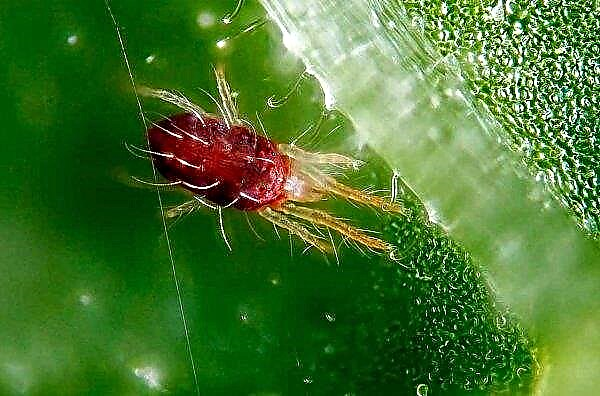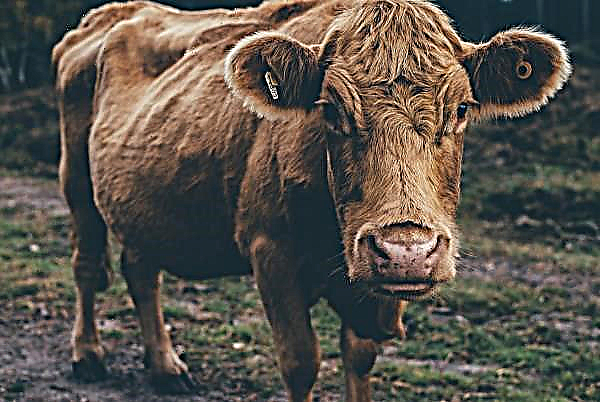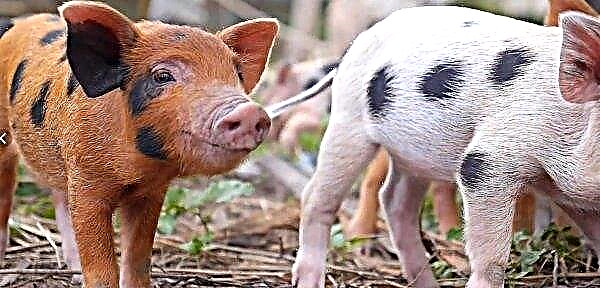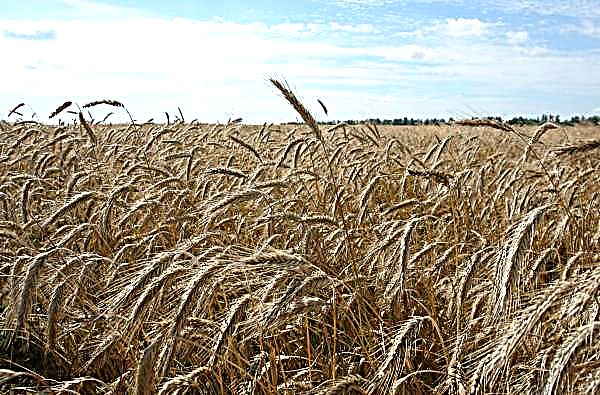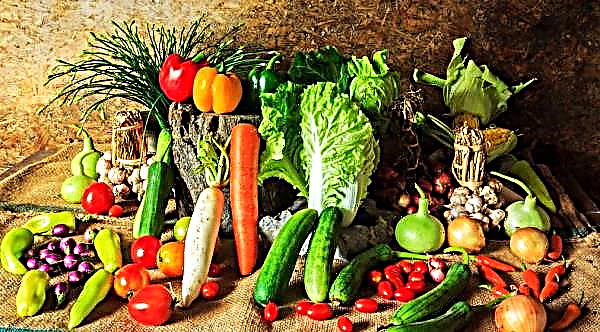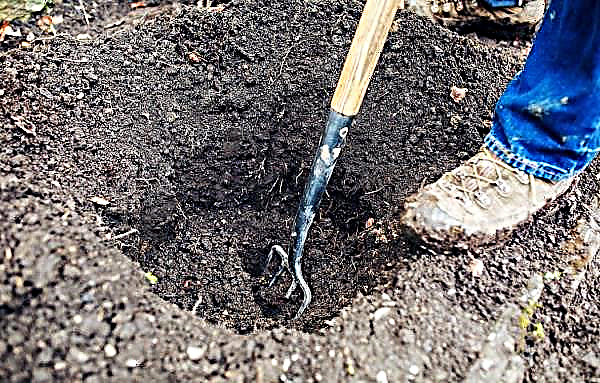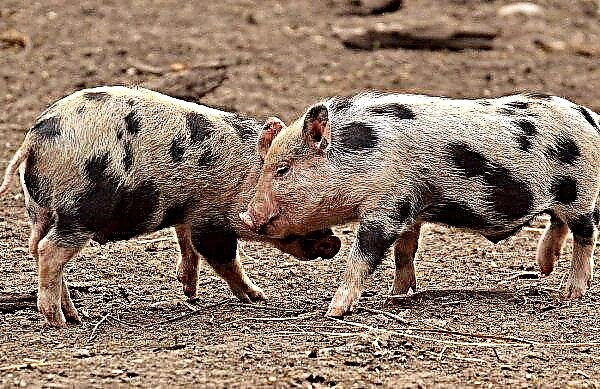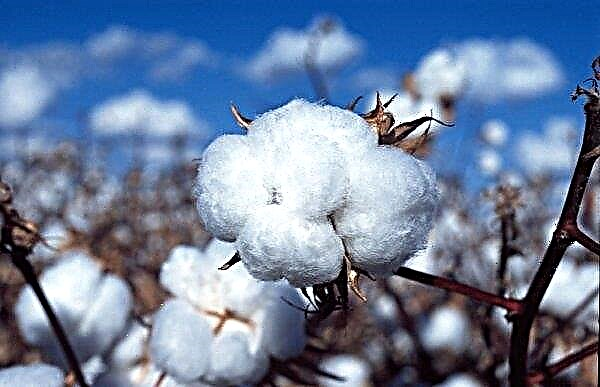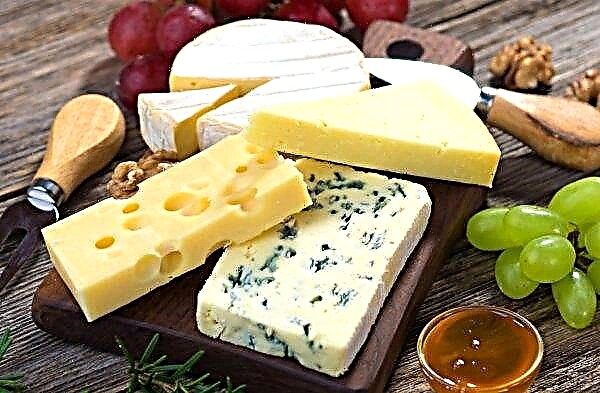Honeysuckle is often perceived as an exclusively decorative plant, capable of decorating the garden only as an element of landscape design. However, in addition to its attractive appearance, the culture brings delicious fruits, rich in vitamins and minerals, from which incomparable jam is prepared in Siberia. One of the varieties, which embodied many of the advantages of culture, is Kamchadalka.
Description of varieties of honeysuckle Kamchadalka
Kamchadalka is a cultivar of edible honeysuckle obtained by natural pollination and subsequent selection selection of number seedlings of the wild Kamchatka species.
Selection history
In 1984, a new honeysuckle cultivar, Kamchadalka, was sent for state variety testing. Breeding work was carried out in the northernmost nursery of Western Siberia - Bakcharsky strong point. Kamchadalka is a direct descendant of its wild relative - the Kamchatka honeysuckle. Selection works were conducted by A.T. Tkachev and I.K. Gidzyuk.
 The work of breeders was not in vain, and after nine years of trials, Kamchadalku was zoned in the regions of Russia.
The work of breeders was not in vain, and after nine years of trials, Kamchadalku was zoned in the regions of Russia.
Appearance, characteristics of berries
Kamchadalka is a mid-season variety; harvesting dates are from late June to early July. The ripening of berries cannot be called friendly, it is stretched, so for a complete harvest you need to pick the fruit several times, as it ripens. The undoubted advantages of the variety include the early onset of fruiting - already in the second season after planting. Peak fruiting begins with the third or fourth year of plant life.
The bush is compact in size and has a thick narrow crown. Typically, the height of the plant is about 1.5 m. Upright branches are long and even, large buds. The leaves are narrow, small in size, with a dull green surface. One inflorescence consists of a pair of small yellow flowers.
In some cases, the yield can reach up to 2.8 kg. Winter hardiness is high, although there are varieties of honeysuckle with even greater resistance to frost. In most regions, with the exception of the northernmost latitudes and some areas of Yakutia, the variety does not require shelter.
 Yield indicators, in comparison with other representatives of the culture, can be called average - up to 1.5 kg per bush.
Yield indicators, in comparison with other representatives of the culture, can be called average - up to 1.5 kg per bush.
Berries of large and medium size, reach a length of 2.3–2.7 cm. The approximate mass of the fruit is 1.2 g. The shape of the berry is traditional for all edible varieties - elongated, reminiscent of a jug. The skin is thin and delicate, covered with wax deposits. The pulp is fibrous, juicy, has a sweet taste with a light pleasant acidity and some notes of bitterness, which, however, do not spoil the overall impression. Experts give Kamchadalka from 3.8 to 4.6 points for taste, depending on the cultivation area.
Berries are rich in minerals and vitamins. The content of certain substances (in 100 g):
- sugar - up to 14%;
- acid - 2.5%;
- Vitamin C - 52 mg;
- Vitamin B1 - 40 mg;
- solids - 5.5-7.8%.
 In addition, the variety has a wonderful aroma.
In addition, the variety has a wonderful aroma.
Among the other most important characteristics of berries, it should be noted that they are very good, in comparison with other varieties, keeping quality and portability. In addition, the berries do not crumble after ripening, which is characteristic of many other varieties of culture.
Advantages and disadvantages of the variety
- According to gardeners, Kamchadalka has the following advantages:
- quite high taste and commercial qualities of the variety;
- high winter hardiness;
- pretty good storage and transportability;
- large-sized fruits, not prone to shedding after ripening;
- ripe berries do not fade on branches for a long time;
- wonderful decorative qualities.
- The disadvantages inherent in the variety:
- not the highest yields;
- extended, unfriendly ripening;
- the berries are difficult to separate from the stalks, as a result of which the skin is damaged and the shelf life of the crop is reduced;
- the need for pollinator cultivation;
- pollination is greatly influenced by the weather - if there is a large amount of rainfall, productivity decreases.
Did you know? To distinguish edible varieties of honeysuckle from all the rest is quite simple: a berry suitable for food is dark blue or black and has a spindle-shaped elongated shape. The decorative and wild-growing form of the species has pairwise growing fruits of a spherical shape, orange or red, better known as «wolfberry».
Agricultural technology
The farming technique for growing Kamchadalki is usually straightforward. The variety is unpretentious, does not require any special care. Growing difficulties can only occur in the southern regions. Due to the climate (a large number of sunny days, high temperatures), the crop can bloom repeatedly. The fruits will have time to ripen before the cold starts, but this negatively affects the buds of the next season - they grow weak and often sick.
Another problem growing crops in the south is winter thaws. Literally within three to five days of warm weather, the kidneys can wake up, and then the newly hit frosts will simply destroy them. As a result, there are great chances to remain without a crop in the summer.
 Honeysuckle responds very quickly to the onset of heat, responding to this by awakening the kidneys.
Honeysuckle responds very quickly to the onset of heat, responding to this by awakening the kidneys.
Choosing a place and planting material
Despite the fact that the variety tolerates frosts well, it reacts worse to seasonal and daily temperature differences. For growing Kamchadalki perfectly protected from the wind and open to sunlight areas. In this case, groundwater should lie deep enough - no closer than 1.2–1.5 m from the surface.

Since the plant needs protection from the wind and has good decorative qualities, it can be grown along the fences, on the south or southeast side of the house or other structures. It is best to buy planting material in a trusted nursery or from breeders with a good reputation. The most suitable option is one-year-old seedlings.
Important! A hill with dry soil for Kamchadalki breeding is not suitable. Such growing conditions can provoke the growth of side shoots and green mass, and the crop may not bloom at all.
You can recognize them by the following signs:
- the plant should have 2-3 healthy branches, the crown height is 35–45 cm;
- branches should be flexible, without signs of disease and dryness, slight exfoliation of the bark is permissible;
- there should be living buds on the branches;
- the roots are developed, fairly moist, white, with a characteristic smell of the earth.
 In addition, planting material with a closed root system (in the container) is very good.
In addition, planting material with a closed root system (in the container) is very good.
Landing and care
In autumn, Kamchadalka is planted in late September or in the first ten days of October. Before the frosts, seedlings must take root. Spring planting is carried out when a stable plus temperature is established in your region (including at night). However, the moment for planting should be improved so that the plants do not begin to bloom buds.
First of all, you need to prepare a site for landing. In the event that you decide to plant Kamchadalka in the fall, you need to start preparatory work about 3-4 weeks before the planned date. It is more expedient to prepare the land for spring planting later - during the autumn work in the garden. To begin with, the site selected for planting is dug up, all plant waste, including grass, leaves, stems, roots and fruits, is removed from it.
 When digging, you need to break up large clods of soil to the size of a cherry.
When digging, you need to break up large clods of soil to the size of a cherry.
For each square meter of excavated soil, the following fertilizers are applied:
- compost or humus - 1 bucket;
- superphosphate - 150 g;
- ammonium nitrate - 50 g;
- wood ash - 0.5 l.
The mixture should be evenly scattered on the ground, with the help of a pitchfork, turn the top layer of the soil so that the wind does not dispel fertilizers.
If necessary, you need to slightly change the composition of the soil, making it more suitable for growing Kamchadalki:
- when digging, add 1-2 cups of hydrated lime, dolomite flour or cement dust per 1 m² to the soil with high acidity;
- into the soil with an alkaline reaction (pH & gt; 7.0), add a couple of buckets of acid peat during digging;
- if the site of your choice has poor drainage properties (the soil is heavy), add 2 buckets of dry river sand.
 Two weeks after the described procedures, when the fertilizer is absorbed by the soil, you can begin to dig out the planting pits.
Two weeks after the described procedures, when the fertilizer is absorbed by the soil, you can begin to dig out the planting pits.
The landing pattern is simple:
- row spacing - 2 m;
- the distance between the bushes - 1.5 m;
- pit dimensions - 40 × 40 × 50 cm.
At least three bushes should be located in one row, due to the need for cross-pollination. Digging a hole, put the upper sod layer of soil to the side, it will be needed to prepare a fertile substrate.
In addition to turf land, in order to make a mixture, you will need:
- rotted manure - 1 bucket;
- superphosphate - 1/2 cup;
- potassium sulfate - 1/3 cup;
- wood ash - 2 cups.
 The listed components must be thoroughly mixed with one bucket of sod land selected from the pit.
The listed components must be thoroughly mixed with one bucket of sod land selected from the pit.
A drainage layer of 7–10 cm thick should be laid at the bottom of the pit. Crushed stone, expanded clay, broken brick, river sand can be used as material for drainage. On top of the drainage layer spread a slide from the prepared substrate. The top of the knoll should be 4-6 cm below the edge of the pit, and the edge of the hill should be approximately half the depth of the pit. The pit is carefully watered with 1–1.5 buckets of water and left for 7–10 days.
After the pit and the hill settle (after 1–1.5 weeks), you can begin to land:
- A few hours before planting, soak the root system of the seedling in a 0.1% solution "Heteroauxin».
- Inspect the landing pit - if the slide has settled, add it to its original level.
- Place the seedling on the top of the embankment so that the root neck rises 3–5 cm above the ground. In the future, at all stages of planting, control the location of the neck - after the planting procedure is completed, it should be 3-5 cm above the ground.
- The roots of the seedling are straightened, laying them on the slopes of the knoll, they are covered with earth, rammed. If there is a fertile substrate, fill the hole with it. If the finished mixture is not left or not enough, take the earth from the bottom of the pit, which you deposited separately when digging.
- Sprinkled with earth pit 2 buckets of warm water and mulch. For mulch, you can use sawdust, straw, chopped or small needles.

A young plant is watered as necessary - as soon as the soil under the bush begins to dry out, it is moistened. An adult Kamchadalka is watered on average every 10-12 days. In the case of dry summers, the frequency of irrigation can be increased. It is better to apply the method of sprinkling with warm water. The first 2 years Kamchadalka does not require top dressing, if they were made during planting. In the future, you can do with organic with a small addition of minerals.
The very first spring top dressing is introduced when the snow begins to melt. To do this, dissolve 1 tbsp in 10 l of water. l urea and watered each bush with this volume of funds. In early spring, a humus bucket is introduced under each plant. You can use the infusion of poultry or manure.
Prepare it as follows:
- Half a bucket of excrement is poured to the top with water, mix well and put in a warm dark place.
- After a while, you will smell a characteristic odor that indicates the readiness of the product. The infusion is mixed well and diluted with water 1:10.
- The resulting product is watered around the bush, the norm for one plant is 10 liters.

Of mineral fertilizers in early spring, you can use nitrate nitrate (2 tbsp. L., Dissolved in a bucket of water, per bush). Shortly before flowering, spraying with preparations of the type "Mortar" or "Aquarin". A good means of foliar dressing is this mixture: one tablespoon of superphosphate and boric acid, 1/2 teaspoon of copper sulfate dissolved in a bucket of water.
It is necessary to spray the plant in the traditional way. During autumn work in the garden, each bush is watered with a bucket of water in which a glass of wood ash is dissolved.
Pollination Features
The description of the variety will be incomplete, if not to say that Kamchadalka is self-infertile. For pollination, she needs nearby bushes of the same species, close in terms of flowering varieties.
Did you know? Honeysuckle is one of the most long-lived and fruitful garden crops. If planted bush in a suitable place and appropriate care for it, the plant is able to bear fruit from 30 to 120 years.
Among the possible pollinators, one can distinguish the following varieties:
- Parabel;
- In memory of Gijuk;
- Blue spindle;
- Cinderella et al.
 It is best to plant Kamchadalka alternating it with one or more of the listed varieties.
It is best to plant Kamchadalka alternating it with one or more of the listed varieties.
For example, in a small area of 6 m² (3 × 2 m), you can plant 4 Kamchadalki bushes at the corners, and in the middle of the three-meter sides - along the bush of one or different of the varieties listed.
Pest and Disease Control
The variety is resistant to most diseases and pest attacks. However, in certain cases (dense planting, rainy summers or excessive watering, deficiency of fertilizing), the plant may be vulnerable to some diseases.
All plant diseases are divided into:
- bacterial (root and stem cancer);
- viral (mosaic, curly, witch's broom, etc.);
- fungal (ramulariosis, all kinds of spotting, anthracnose, powdery mildew, wilt, gray rot, etc.).
 Diseases caused by fungi are treated with fungicides according to the instructions.
Diseases caused by fungi are treated with fungicides according to the instructions.
Bacterial diseases do not pose any significant danger, their pathogen dies quite quickly in the natural environment, especially when fertilizing (the microbes are most afraid of phosphorus-containing fertilizers). Viruses are practically not treatable, the plant affected by them needs to be removed as quickly as possible outside the garden and destroyed.
It is also necessary to remove all its residues, and some experts recommend not growing plants in this place for the next 4-5 years. The main procedures are carried out in the spring, before the buds begin to swell, and in the fall, after leaf fall. However, if necessary, additional treatments are performed, but no later than 2-3 weeks before harvesting.
For the treatment of diseases, such drugs are used:
- Bordeaux liquid (3%);
- HOM;
- "Fundazole";
- "Speed";
- "Topaz" and others.

The greatest danger for honeysuckle planting is represented by aphids and honeysuckle flies. To destroy pests and their larvae, the following drugs are used:
- colloidal sulfur (1%);
- "Decis";
- "Karbofos";
- "Actellicus";
- "Fufanol";
- "Fitoverm" and others.
 Insecticides and acaricides are used to kill pests throughout the growing season, as necessary.
Insecticides and acaricides are used to kill pests throughout the growing season, as necessary.
There are a fairly large number of folk methods of combating both diseases and pests:
- plant marigolds, calendula or garlic around the honeysuckle;
- foliar treatment with solutions of soda and iodine, tinctures of garlic, mustard, tobacco, celandine, ash;
- scalding the plant with boiling water (80 ° C);
- spraying with green soap.
It is well known that treating a disease is much more difficult than preventing it.
Did you know? Wiliga honeysuckle variety, named after the river of the same name flowing in the Magadan region, can tolerate frosts up to –50°C. Of all fruit crops, honeysuckle is rightfully considered one of the most winter-hardy: its vegetation begins at an average daily temperature of +3°C, and it blooms at +9°WITH.
The simplest preventive measures will help minimize the risks of developing diseases and pests:
- regularly feed plantings - timely application of fertilizers increases immunity;
- remove weeds - not only from the area where the honeysuckle is growing, but also from the garden in general;
- in the early spring and autumn, remove all plant debris;
- Perform thinning and trimming regularly - do not allow too thick shoots to appear;
- buy seedlings in nurseries and from breeders with a favorable reputation.
Cropping and shaping the crown
Cut Kamchadalka during autumn work in the garden. Only adult bushes, from 6 years or more, are pruned.
The procedure is as follows:
- Remove all root shoots. Strong branches with a large number of buds do not touch.
- Remove diseased, dry, damaged and weak shoots.
- Remove all branches growing inside the bush and down. After the procedure, the bush should consist only of healthy straight branches growing up and out.
- In the spring, the bush is inspected for the presence of frozen shoots - if there is one, it is removed.

Preparing for the winter
Honeysuckle is a winter-hardy crop; in most growing regions it does not require shelter. The variety normally withstands fairly strong and prolonged frosts that do not affect the further fruiting and productivity of the plant. After the snow falls, you need to collect more and throw it between the bushes. In addition, in the autumn you need to change the mulch by putting a new layer 10–13 cm thick.
 If your region has low winter temperatures, it’s not a rare occurrence, you can grow plants.
If your region has low winter temperatures, it’s not a rare occurrence, you can grow plants.
Harvesting and transportation
The ripening of the Kamchadalka crop is gradual - in order to completely cut off the berries, it will be necessary to complete 2-3 collection procedures. Unlike most other varieties of culture, the fruits of Kamchadalka do not fall off after ripening, but rather hang on branches for a long time without loss of marketability.
As you know, honeysuckle does not apply to crops whose fruits are stored for a long time, but Kamchadalka compares favorably with this quality compared to other varieties. Nevertheless, even under ideal conditions, the crop cannot be kept fresh for longer than one week.
Important! A feature of the variety is the difficulty in separating the berries from the stalks, so that the fruit is broken off from the branch along with the tail, otherwise the damaged surface will not allow to keep the crop for any long time.
For harvesting, it is better to use shingle baskets, veneer trays or other similar containers. You should not collect more than two kilograms of berries in one container, while the container should not be filled to the top. To comply with this rule is especially necessary if you plan to transport containers with a crop or will store them in several tiers.
Fill the tank about 3/4 of the volume and set aside, in a shaded place. It is impossible to pour berries from one container to another if you are not going to immediately eat or process it. Do not put correctly picked whole berries and those whose surface was damaged during harvesting, or which do not have stalks in one container.
 When collecting honeysuckle, hold the branch with one hand, gently pinch the berries with the other on the stem, breaking it off at the base.
When collecting honeysuckle, hold the branch with one hand, gently pinch the berries with the other on the stem, breaking it off at the base.
There are 4 main options for using the crop (not counting sales or refreshments):
- eat fresh;
- recycle;
- to freeze;
- to dry.
As for processing, from honeysuckle you can make jam, jam, jelly, stewed fruit, grind with sugar, squeeze juice. The fruits go well with strawberries - both boiled and raw, grated with sugar. From these two types of berries, an excellent puree is obtained, which can be used as a filling for pies.
Important! The most favorable conditions for the storage of honeysuckle: air temperature in the range 0 ... + 3 ° C, relative humidity - 75–85%.
Kamchadalka is an absolutely unpretentious variety, the fruits of which are rich in vitamins and minerals, have good taste and good yield. Such qualities as winter hardiness and good appearance make the variety an excellent option for cultivation in the country or in a private garden. Kamchadalka is perfect for breeding in the Middle lane and to the north, in the Urals and Siberia, but for cultivation in more southern regions it is better to choose a different variety.
User reviews
I have Kamchadalka with bitterness. The taste is delicate, dessert, sweet-sour, with bitterness. Mid-term ripening. The bush is young, in 2013 it will be 4 years. Berries so far only to "try." If you collect from all varieties, you can also sugar. In a candied form, bitterness is not felt. And in the freezing - beee .... bitter, like all medicine. But still, I freeze a small jar, relieve heartburn very well and reduce the pressure.

